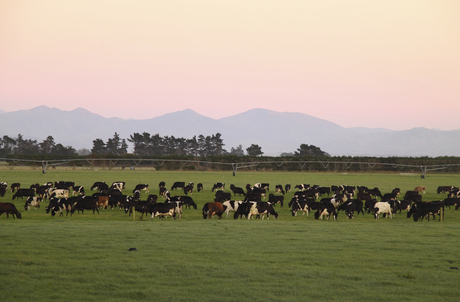Australian agriculture must prepare itself for a hungrier, wealthier, fussier world

Research conducted by the Rural Industries Research and Development Corporation (RIRDC) and CSIRO has highlighted five key megatrends impacting the future of Australian agriculture in the next 15 to 20 years:
1. A hungrier world: By 2050, there will be 70% (2.3–2.4 billion) more people on earth, who will need 60–70% more food than is currently available.
2. A wealthier world: Wealthier consumers in developing economies will drive demand for more and diverse foods. In Asia alone, as average incomes rise from US$12,000 to $44,000 per person by 2060, beef consumption is predicted to rise 120%, while dairy consumption will double by 2050.
3. Fussier customers: Empowered by information, the consumers of 2050 are likely to expect food to be healthy, nutritional, clean, green and ethically produced.
4. Transformative technologies: Advanced digital, genetic and materials science technologies will enable farmers to improve how they produce food and fibre products, while innovative sensory systems and data analytics will create highly integrated ‘farm to fork’ supply chains. Farmers will be able to make better decisions and manage risk more effectively, while consumers will have greater access to trace the origins of their food, putting production methods under the spotlight.
5. Bumpier ride: Australian rural industries can expect a changed risk profile, which will call for new and deeper levels of resilience to withstand shocks associated with climate change, environmental change and globalisation.
This ‘big-picture’ research was undertaken to help Australia’s agricultural sector anticipate and proactively plan for change.
“The research reinforces that the predicted wealthier and choosier Asian consumer of 2035 represents a key opportunity for Australian farmers to drive new markets in that region, underpinned by the need for ongoing research and development to ensure future farming systems improve productivity. However, we need to be smart and be on the front foot as we are not the only one with our eyes on these opportunities,” said Craig Burns, RIRDC’s managing director.
CSIRO Principal Scientist in Strategy and Foresight Stefan Hajkowicz, who co-led the research, believes the ‘where did my food come from?’ factor will be highly significant for future food consumers. “Establishing provenance, quality and safety will allow us to fetch market premiums,” he said, forecasting that Australian agriculture is set to move from high tech to “super high tech”.
Complementing the megatrends insights, research released by the Australian Farm Institute investigated the potential for the development of a competitiveness indicator or index as a decision-making tool to enhance agricultural competitiveness.
While the research highlighted a number of limitations in developing such an index, including the lack of robust, internationally comparable agriculture sector statistical data, it found that a ‘dashboard’ of indicators of national agricultural competitiveness could be achievable.
Both reports and accompanying summaries can be downloaded from the RIRDC website.
Food of the future: Anuga presents food trends for 2025
Anuga, together with Innova Market Insights, presents future food trends and focal themes for its...
Heat and Control announces acquisition of Tek-Dry Systems and Hunt Heat Exchangers
Heat and Control has announced the acquisition of two UK-based providers of thermal processing...
Global dairy markets shift under tariff pressure
Major dairy exporters face diverse market and production conditions with geopolitical tensions,...














